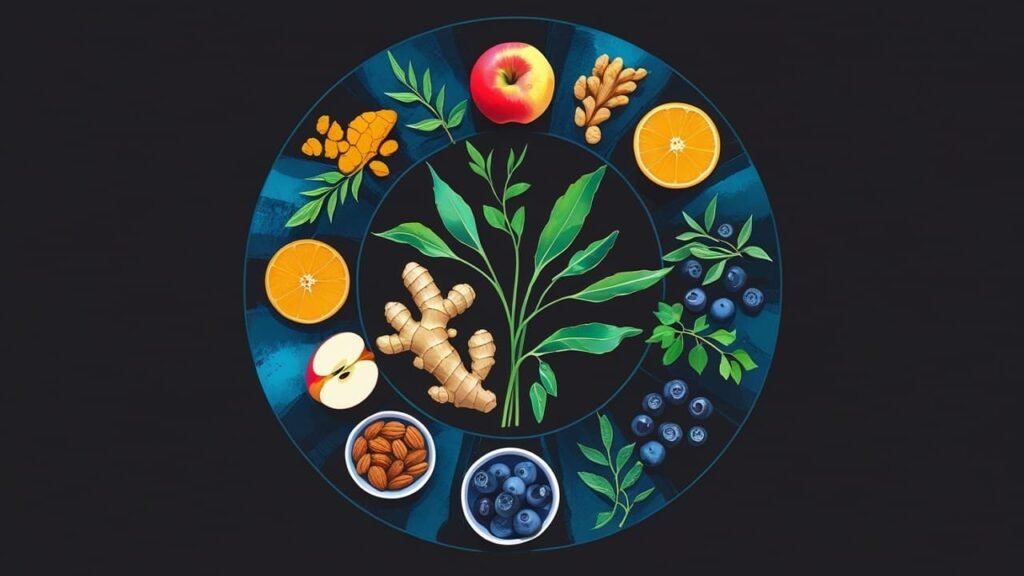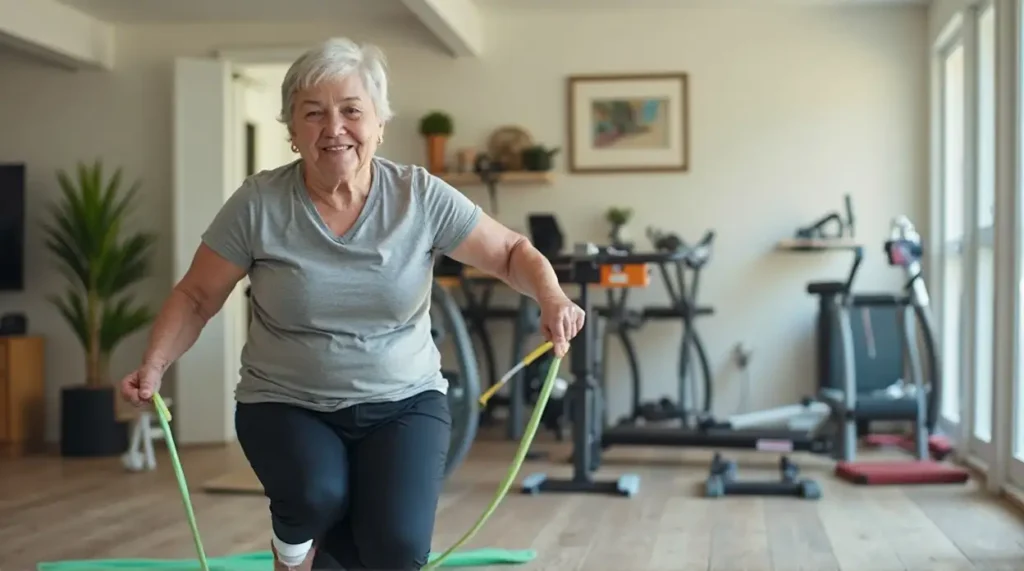Sugar hides in many foods that seniors eat each day. It is in bread, sauces, drinks, and snacks. Too much sugar weakens the body, raises blood sugar, and adds strain to the heart. The truth is, planning just one week with less sugar can change energy, mood, and long-term health.
This is not about giving up all sweet foods. It is about making a plan that works for the body, fits daily habits, and brings steady energy. Let’s explore how to build a low-sugar week that feels doable and rewarding.
As the body ages, it handles sugar less well. Muscles use less sugar for fuel. The pancreas works harder. Blood sugar spikes hit harder and stay longer. These changes raise the risk of diabetes, heart disease, and weight gain.
Seniors deserve strength, energy, and sharp thinking. A low-sugar plan gives all three. Imagine a week where meals give steady power, cravings calm down, and sleep feels deeper. That is the promise of this plan. And it starts with simple daily steps.
Here is what we will cover:
- How to spot sugar traps.
- How to swap without feeling deprived.
- How to set up daily meals.
- How to stay motivated for a full week.
Each part builds on the last until you see how to make a complete week without sugar overload.
The Build: Step by Step Toward a Low-Sugar Week
Step 1: Spot Hidden Sugars
Most people think sugar means desserts, candy, or soda. The truth is that sugar hides in everyday foods seniors may not suspect. That includes ketchup, pasta sauce, salad dressings, breakfast cereal, flavored yogurt, and even certain breads. These hidden sugars add up and push daily intake far beyond safe levels.
For seniors, this is more serious. The body processes sugar less efficiently with age. Hidden sugars can make blood sugar spike without warning, and those spikes may leave someone feeling shaky, tired, or irritable. That is why spotting them is the first step toward a better week.
The best tool is the nutrition label. Look for “added sugars” on the package. If the number is more than a few grams per serving, think about whether the food is worth it.
Another trick is checking the ingredients list. If sugar, syrup, honey, molasses, or anything ending in “-ose” (like glucose or fructose) appears in the top three ingredients, that food is likely too sweet.
A practical example:
- Flavored yogurt may contain 12 to 20 grams of added sugar, equal to several teaspoons. Swap it for plain yogurt with fresh fruit.
- White sandwich bread can carry 3 to 4 grams of sugar per slice. Switch to 100% whole grain bread, which has more fiber and less sugar.
- Granola bars sold as “healthy snacks” can pack 10 grams or more of added sugar. Replace with a handful of nuts and seeds.
The key is not cutting everything at once but swapping two or three high-sugar foods each day. That alone reduces sugar by dozens of teaspoons across a week. With these changes, the taste buds adjust, cravings calm down, and healthier foods start tasting better.
Step 2: Plan Breakfast for Steady Energy
Breakfast is powerful because it sets the pace for the day. A bowl of sweet cereal, a donut, or toast with jam may feel quick and easy, but these meals load the body with sugar. Blood sugar rises fast, then crashes, leaving seniors hungry again within an hour or two. That crash brings cravings for more sugar, creating a cycle that repeats all day.
To break the cycle, focus on a breakfast with protein, fiber, and healthy fats. These nutrients slow down digestion, keep blood sugar steady, and provide energy that lasts until lunch. The goal is not to skip sweetness entirely, but to keep it natural and balanced.
Here are some strong breakfast choices:
- Oatmeal made from plain rolled oats topped with chopped nuts, a spoon of chia seeds, and banana slices. The fiber in oats plus protein in nuts keeps energy steady.
- Two boiled or scrambled eggs with whole grain toast and sliced tomato or avocado. This combination supports muscle health while avoiding sugar spikes.
- Plain Greek yogurt with fresh blueberries or strawberries. The natural sweetness of fruit replaces added sugar, and yogurt gives protein and calcium for bone strength.
- Cottage cheese with sliced pear or peach. This pairing balances protein with natural fruit sugar.
One of the biggest traps at breakfast is juice. A glass of orange juice may seem healthy, but it can contain the sugar of several oranges without the fiber.
That floods the body with sugar at once. Water, unsweetened tea, or black coffee are better choices. For those who want flavor, adding lemon slices or fresh herbs to water makes it refreshing without sugar.
Seniors who change just their breakfast see results fast. Energy stays more stable, mid-morning cravings reduce, and focus improves. By starting the day with the right balance, the rest of the day feels easier to control.
Step 3: Focus Lunch and Dinner on Balance
Lunch and dinner matter most because they make up the largest share of daily calories. For seniors, balance is the goal: enough protein to protect muscles, enough vegetables for vitamins and fiber, and enough whole grains for slow, steady energy. A plate built this way fuels the body without the sugar rush and crash.
Protein choices can include chicken, turkey, fish, beans, eggs, or lean cuts of beef. Fish, such as salmon or mackerel, also supports brain and heart health with healthy fats. For vegetarians, lentils, tofu, and chickpeas provide solid protein. Each meal should have a palm-sized portion of protein.
Vegetables should take up half the plate. Choose colorful options such as broccoli, carrots, peppers, spinach, or zucchini. The colors reflect different nutrients that protect eyesight, bones, and the immune system. Steaming, roasting, or stir-frying with olive oil keeps vegetables flavorful without added sugar.
Grains provide steady fuel but should be whole, not refined. Brown rice, barley, quinoa, or whole wheat pasta digest more slowly than white rice or white pasta. That helps keep blood sugar stable. Add a small serving — about the size of a fist — alongside protein and vegetables.
Sauces are a common trap. Many bottled dressings, barbecue sauces, and stir-fry mixes contain 6 to 12 grams of added sugar per serving. Instead, flavor meals with olive oil, vinegar, lemon juice, garlic, or herbs. For example:
- Grilled chicken with steamed broccoli and brown rice, topped with olive oil and lemon.
- Baked salmon with roasted carrots and quinoa, seasoned with dill and black pepper.
- Black beans with sautéed peppers and onions, served with barley and a squeeze of lime.
Each of these meals is filling, flavorful, and free of added sugar. They also deliver steady energy, so seniors avoid the afternoon crash that sugary sauces or refined carbs create.
Step 4: Smart Snacks Between Meals
Snacking is where sugar creeps in unnoticed. Cookies, pastries, granola bars, and packaged crackers may seem small, but they add up to large amounts of sugar across a day. For seniors, this can lead to blood sugar swings that cause fatigue and irritability.
The best strategy is to prepare snacks in advance. If healthy snacks are ready to grab, it is easier to avoid sugary ones. Keep a bowl of fresh fruit on the table, small bags of nuts in the pantry, or cheese cubes in the fridge. That way, hunger gets answered quickly without falling back on sugar-heavy options.
Here are some smart, low-sugar snacks:
- A handful of almonds, walnuts, or sunflower seeds.
- A small apple or pear paired with peanut butter.
- Carrot sticks or cucumber slices with hummus.
- Plain popcorn popped at home without added sugar.
- A boiled egg with a sprinkle of salt and pepper.
These snacks keep energy stable between meals and reduce cravings for sweets. They also deliver important nutrients: nuts and seeds provide healthy fats, fruit delivers natural fiber, and vegetables bring hydration and vitamins.
One tip: keep portion sizes reasonable. Nuts and cheese are healthy, but too much adds extra calories. A small handful or a few slices is enough to take away hunger and keep energy up.
Step 5: Drinks That Support the Plan
Drinks can quietly add more sugar than meals. Soda, sweet tea, and fruit juice all deliver a sugar surge without any fiber to slow it down. For seniors, this can lead to sudden spikes in blood sugar, followed by energy crashes. Cutting out sugary drinks is one of the fastest ways to lower daily sugar intake.
Water should be the main drink across the day. It supports digestion, joint health, and mental clarity. If plain water feels boring, sparkling water adds fizz without sugar. Adding lemon slices, cucumber rounds, or fresh mint gives flavor without raising blood sugar.
Herbal teas are another smart choice. Chamomile, peppermint, or rooibos can be enjoyed hot or cold. For those who enjoy coffee, black coffee or coffee with just a splash of milk works. Avoid flavored creamers or syrups, as these are high in sugar.
The biggest win comes from replacing juice and soda with water or unsweetened drinks. For example:
- Swapping one can of soda for water removes about 10 teaspoons of sugar.
- Skipping one glass of orange juice saves another 6 to 7 teaspoons.
After a week without sugary drinks, many seniors notice that cravings decrease. Water starts tasting refreshing again, and food flavors become sharper. This small step can cut dozens of teaspoons of sugar each week, protecting both weight and long-term health.
Planning a low-sugar week is not about perfection. It is about progress. Each swap cuts sugar and builds strength. One week teaches the body and mind that sweet foods are not the only source of comfort.
The next step is simple: repeat the plan, and keep adding small wins. With each week, habits grow stronger. The reward is steady energy, clear thinking, and a body that feels more alive. Seniors do not need strict diets. They need smart, steady choices.
A low-sugar week is not just possible. It is powerful. And it starts with a single meal today.




